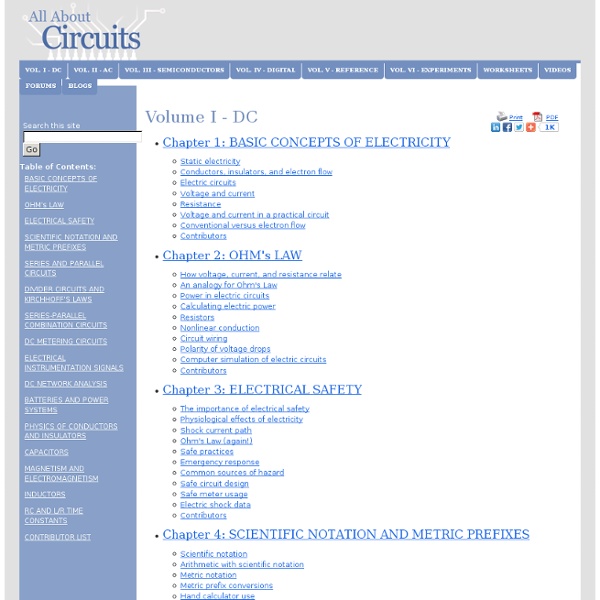Volume I - DC : All About Circuits

Table of mathematical symbols
When reading the list, it is important to recognize that a mathematical concept is independent of the symbol chosen to represent it. For many of the symbols below, the symbol is usually synonymous with the corresponding concept (ultimately an arbitrary choice made as a result of the cumulative history of mathematics), but in some situations a different convention may be used. For example, depending on context, the triple bar "≡" may represent congruence or a definition. Each symbol is shown both in HTML, whose display depends on the browser's access to an appropriate font installed on the particular device, and in TeX, as an image. Guide[edit] This list is organized by symbol type and is intended to facilitate finding an unfamiliar symbol by its visual appearance. Basic symbols: Symbols widely used in mathematics, roughly through first-year calculus. Basic symbols[edit] Symbols based on equality sign[edit] Symbols that point left or right[edit] Brackets[edit] Other non-letter symbols[edit]
Circuit Simulator Applet
This is an electronic circuit simulator. When the applet starts up you will see an animated schematic of a simple LRC circuit. The green color indicates positive voltage. To turn a switch on or off, just click on it. The "Circuits" menu contains a lot of sample circuits for you to try. Full Screen version. Directions. Standalone (offline) versions. Index of Circuit Examples.
Free Online Course Materials | Courses
Related:
Related:



